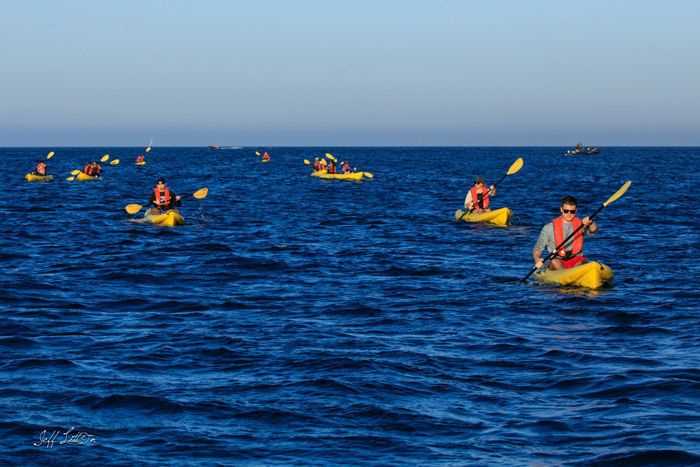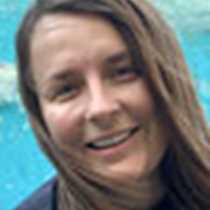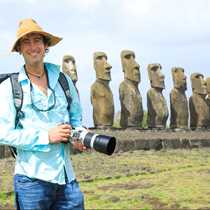With classic Los Angeles sunshine, guests embarked National Geographic Venture this morning to enjoy bloody maries, mimosas, and a pleasant sail across the Santa Barbara Channel to Catalina Island. Part of the Channel Island chain, William Wrigley Jr. purchased the island in 1919 and later donated 80 percent to the Catalina Island Conservancy. Upon arrival, guests went to shore to explore a small section of the island via hiking, kayaking, or Zodiac cruising. Since there is a high rate of endemism in both flora and fauna in the Channel Islands, they are commonly referred to as “the Galapagos Islands of North America.” The Catalina Island Conservancy works to protect these species, and guests had an opportunity to learn about the rare plants and animals – such as the island fox – that can be found only on these eight islands. After sunset cocktails on the sundeck, the natural history staff shared a recap on the history ecology of the island; during dinner, the ship sailed south for a view of the town of Avalon and its well-known casino.
11/18/2019
Read
National Geographic Venture
Santa Catalina Island, California
We departed the dock in San Pedro and sailed into the soft evening light and weather, with the lights of the Los Angles metropolis in the background. After a gentle night crossing of the San Pedro Channel, we awoke to an absolutely perfect day at Two Harbors, Catalina Island. No wind. No clouds. Bright blue sky. Flat seas. A perfect set of conditions for the morning’s activities than included a fast and far hike, a moderate hike, kayaking, paddleboarding, and Zodiac cruising. Those who embarked on the hikes were treated to spectacular vistas, as well as challenges to leg muscles. Those on the water, especially those who went around Bird Rock, saw two sea lions at the surface with flippers extended into the air and sun as little solar heating panels, which warmed the circulating blood before returning and warming their bodies. And of course they did what many of us do when lying in the sun…doze. Once every few minutes a head would poke up to check out the scene, then back to the nap. Hundreds of cormorants sat like miniature sentinels on the rock, all facing the same direction, some drying out their wings after spending some time in the water. Interspersed among the cormorants were a handful of pelicans, including one out of place male who was in full breeding colors. All “dressed up,” but no one was interested because he was a few months too late! Some of the kayakers saw an adult leopard shark, a benign species that pays no attention to humans. In the water (and on the beach) were hundreds of pyrosoma , cone-shaped, colonial tunicates that normally inhabit deeper and colder water, but were probably uplifted to the surface by localized upwelling. And there were signs of giant kelp returning to the area after warm waters of the last El Ni ñ o. After returning to National Geographic Venture , we were treated to an exquisite brunch, followed by deserts on the sun deck. Whale watching Santa Catalina recede slowly into the distance the realization became firm: This was indeed a perfect day in every respect.








